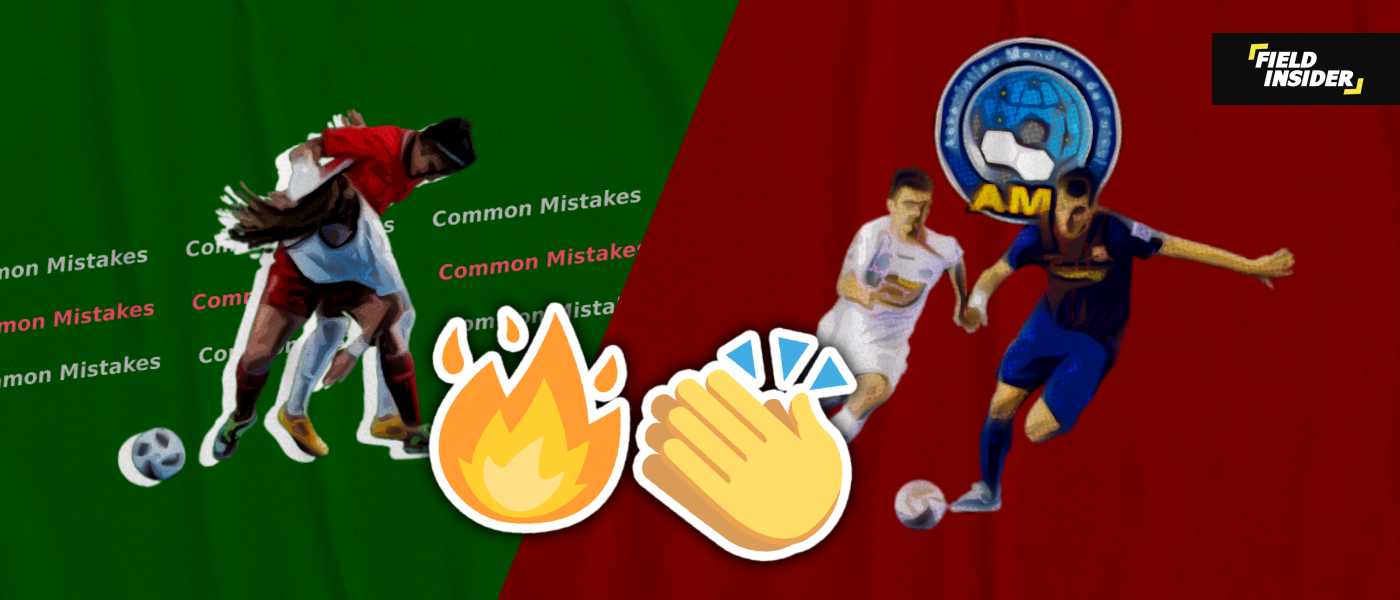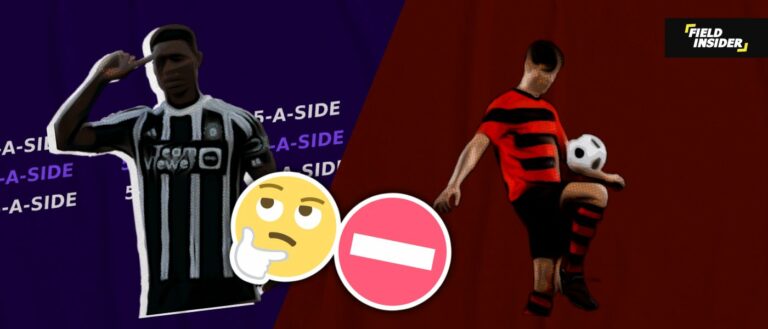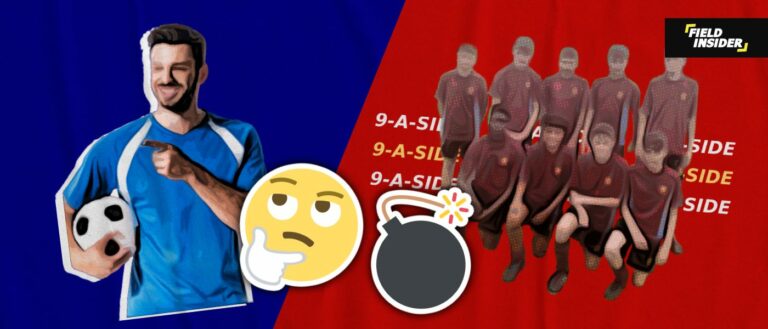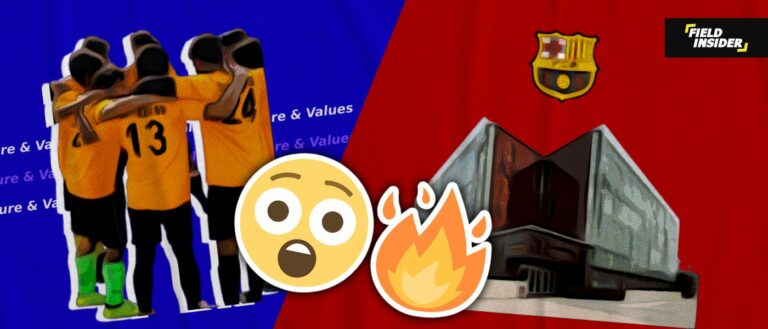How To Defend In Futsal: Complete Guide
Futsal, with its quick pace and emphasis on skill and strategy, presents a unique set of challenges and opportunities, particularly when it comes to defense. Understanding and mastering the art of defense in futsal is crucial for any team or player aiming for success in this dynamic sport.
Whether you’re a beginner looking to understand the basics or an experienced player aiming to refine your skills, the insights offered here will help you navigate the complexities of futsal defense with confidence and expertise.
Key Takeaways
| Key Takeaway | Description |
|---|---|
| Understanding Futsal Defense | Essential for strategic gameplay, focusing on anticipation and strategic positioning. |
| Fundamentals of Effective Defense | Emphasizes body positioning, marking, and intercepting passes. |
| Tactical Strategies | Introduces pressing, compact defending, and counter-attacking as core strategies. |
| Individual Skills | Covers one-on-one defending and the goalkeeper’s crucial role in defense. |
| Team Drills and Training | Highlights the importance of practice drills tailored for defensive improvement. |
| Common Mistakes | Identifies overcommitting, ball-watching, and poor communication as pitfalls to avoid. |
| Conclusion | Recaps the importance of mastering defensive skills and encourages continuous learning and application. |
Understanding Futsal defense
Strategic Gameplay
In futsal, strategic defense is vital, requiring players to think beyond mere ball interception. Defensive strategies should be adaptable, with players ready to switch from high-pressure tactics to more conservative approaches based on the game’s flow.
Emphasizing strategic gameplay in training can prepare players to make intelligent decisions, ensuring they’re not just reacting to the opponent’s moves but actively influencing the game’s outcome.
Anticipation and Strategic Positioning
Anticipating the opponent’s next move and positioning accordingly is key to a successful defense in futsal. Players must read the game, predict play developments, and position themselves to intercept passes or block shots.
This requires not only physical agility but also a deep tactical understanding of the game. Developing these skills involves studying game footage, practicing positioning drills, and learning from experienced players.
Fundamentals of Effective Futsal Defense
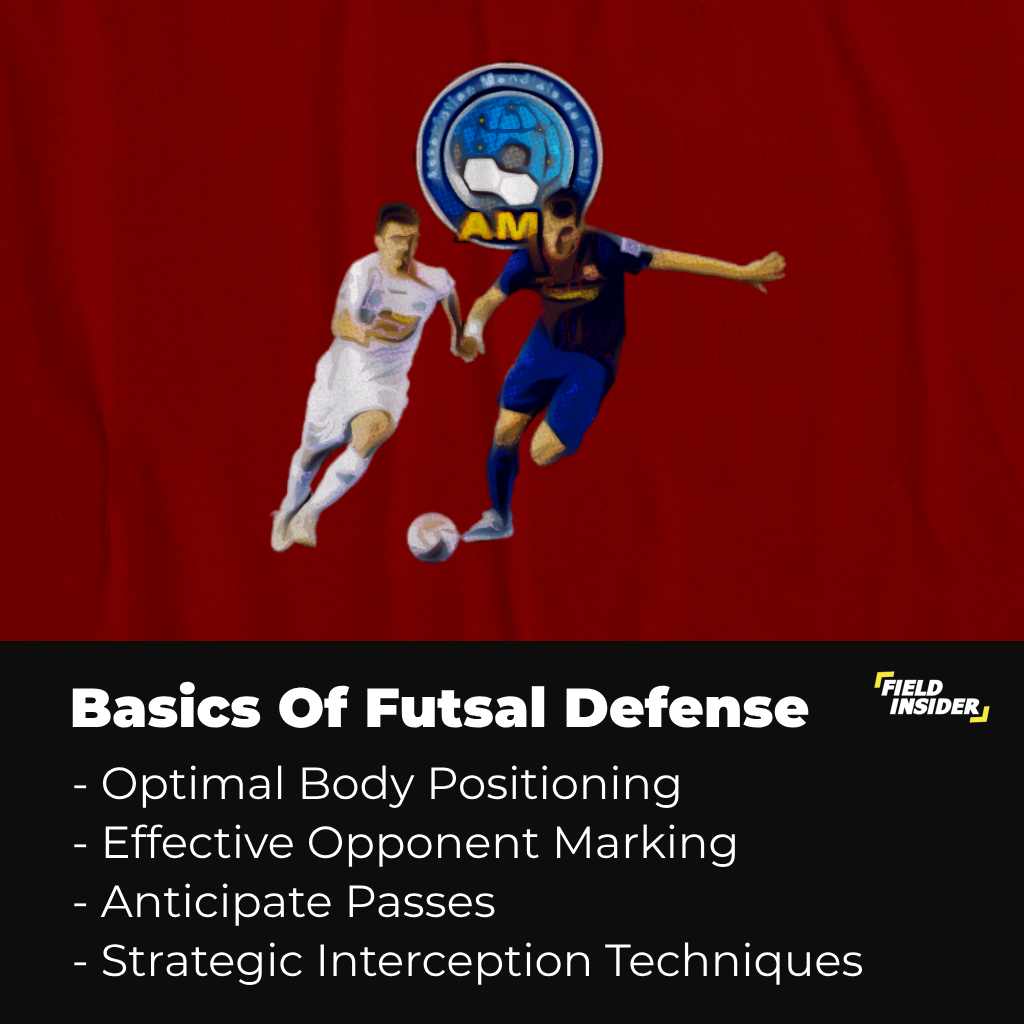
Body Positioning and Posture in futsal defense
In futsal, body positioning and posture are crucial for quick movements and effective defense. Maintaining a low center of gravity helps defenders stay balanced, enabling rapid direction changes to counter attackers.
It’s essential to keep the body between the attacker and the goal, making it challenging for opponents to find a clear shot. It is a simple yet effective tactic to limit scoring opportunities.
Marking and Tracking Opponents
Marking and tracking opponents are key to minimizing open spaces and preventing clear scoring opportunities. This involves man-to-man marking, where defenders shadow specific opponents, and zone defense, focusing on guarding areas of the court.
Both strategies require stamina and team coordination, essential for a solid defense that can adapt to the game’s dynamics, as explored in discussions on best futsal formations.
Anticipating and Intercepting Passes
Anticipating and intercepting passes distinguishes top defenders. By reading the game and understanding opponent strategies, defenders can predict and cut off passing lanes.
This not only disrupts the opponent’s flow but also creates opportunities for counter-attacks. Enhancing anticipation skills involves analyzing game patterns and strategies, with resources like counter-attack in futsal providing valuable insights for transitioning from defense to offense.
Tactical Strategies for Futsal Defense
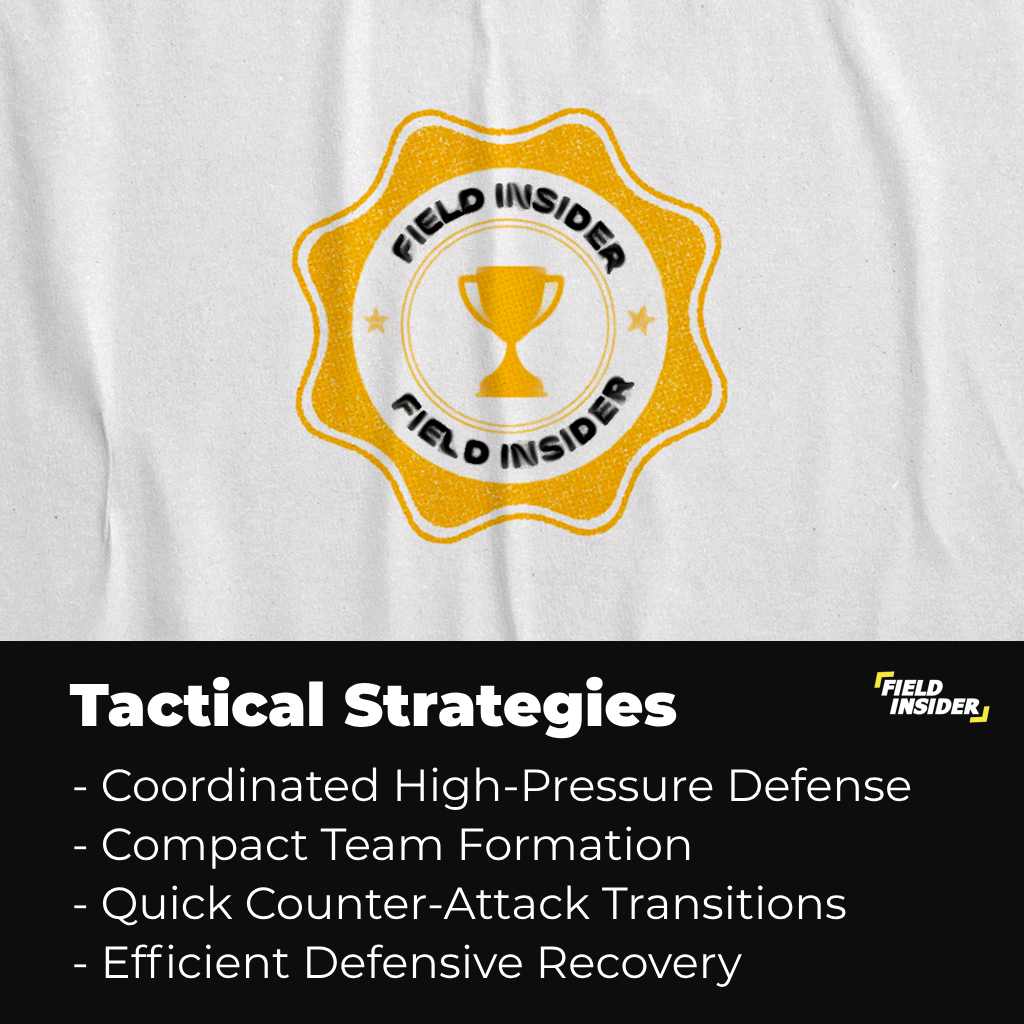
Pressing and High-Pressure in futsal Defense
Pressing and applying high pressure are tactics designed to regain possession quickly. By aggressively challenging the ball carrier and pressing as a team, defenses can force turnovers and disrupt the opponent’s rhythm.
This coordinated effort requires stamina and teamwork, ensuring no easy options are left for the opponent to exploit. The effectiveness of pressing relies on understanding when and where to apply pressure, a skill that can significantly tilt the game in a team’s favor.
Compact Defending and Covering Spaces
Compact defending keeps a team’s shape tight, reducing gaps through which opponents can penetrate. This approach emphasizes maintaining a strong defensive formation and covering for teammates, crucial for preventing breakthroughs.
Covering gaps and managing overlapping runs require players to communicate and move as a unit, showcasing the importance of teamwork in futsal defense. Effective compact defending can stifle an opponent’s attack and facilitate quick transitions to offense.
Counter-Attacking and Transition Defense
Counter-attacking turns defensive actions into offensive opportunities. Quick reactions during turnovers allow teams to exploit spaces left by the opponent. This strategy hinges on swift transitions from defense to attack, requiring players to be alert and ready to move upfield the moment possession is regained.
Transition defense is equally important; teams must quickly revert to a defensive stance after losing the ball to prevent counter-counter-attacks. Mastering these tactics ensures a team can effectively switch between defense and attack, keeping opponents off balance.
Enhancing Futsal Defense: A Quantitative Analysis
In the fast-paced world of futsal, defensive actions are paramount. The intricacies of futsal defense are often overshadowed by the flair of offense, but a closer look reveals a complex tapestry of skills that are crucial for success.
The bar chart is based upon the study “Development of Defensive Actions in Small-Sided and Conditioned Games With Offensive Purposes in Futsal“, that offers a quantitative analysis of various defensive actions and their development in futsal.
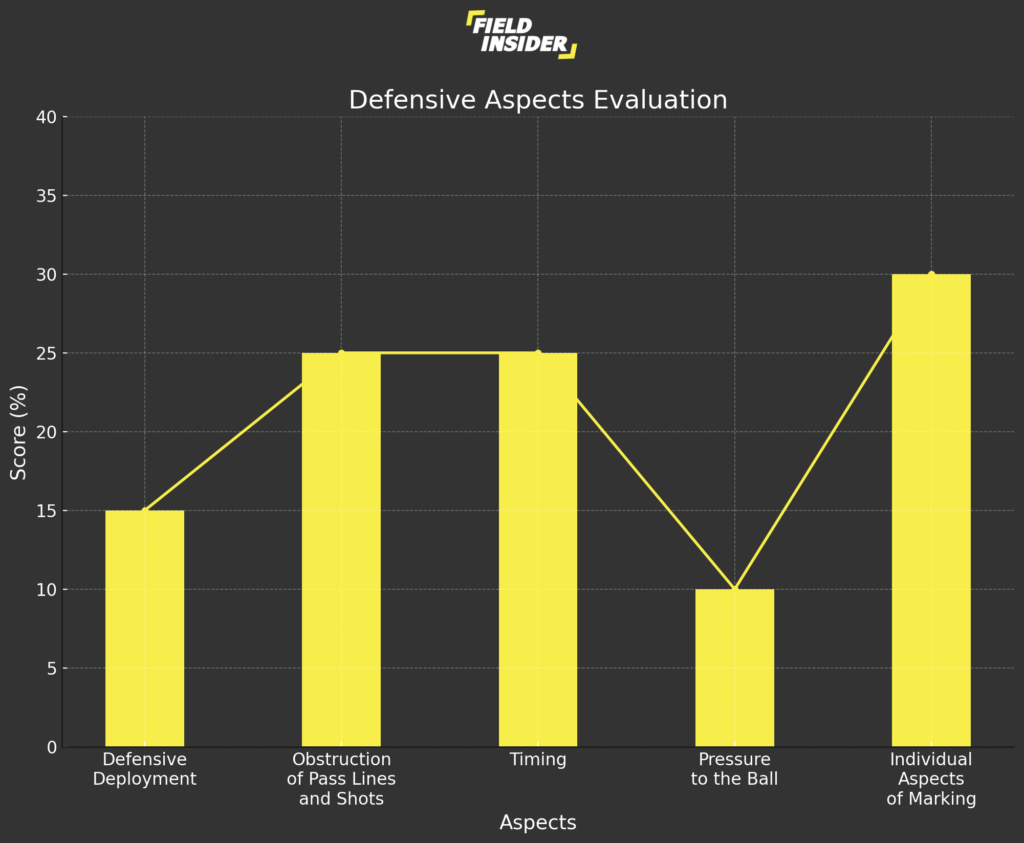
The chart measures five key defensive aspects on a percentage scale, highlighting the importance of each in the overall defensive strategy. ‘Obstruction of Pass Lines and Shots’ and ‘Timing’ emerge as the most developed skills. Both of those skills are essential for disrupting the flow of the opposing team’s play.
‘Defensive Deployment‘ and ‘Pressure to the Ball’ follow, indicating a focus on spatial organization and aggressive challenges, respectively.
‘Individual Aspects of Marking‘ scores the highest, underscoring the significance of personal duels in futsal where one-on-one battles can often determine the outcome of a game.
This visual representation underscores the critical nature of a well-rounded defensive skillset in futsal. By analyzing these aspects, coaches and players can identify strengths to be leveraged and areas needing improvement, shaping training regimes that are targeted and effective.
Individual Defensive Skills and Techniques in futsal defense
One-on-One Defending
Mastering one-on-one defending is critical in futsal. Effective containment involves maintaining balance and positioning to force attackers into less threatening areas.
The art of jockeying—staying in front of the attacker without committing too early—is key to disrupting their progress. Defenders must also time their tackles perfectly to avoid fouls and regain possession, requiring a keen understanding of an opponent’s tactics and likely moves.
Goalkeeper’s Role in Futsal Defense
The goalkeeper’s role extends beyond traditional shot-stopping; they are integral to the team’s defensive and offensive strategies. Their ability to make saves in confined spaces and their quick decision-making on when to hold the ball or initiate an attack are vital.
A goalkeeper must also excel in sweeping up through balls and distributing accurately to set up counter-attacks, making their role multifaceted and crucial to the team’s success.
Spatial Awareness and Communication
Spatial awareness and communication are indispensable skills for any defender in futsal. Being aware of one’s position relative to the goal, the ball, and opponents enables defenders to make informed decisions quickly.
Communication is equally critical, as it ensures that all team members are aligned in their defensive duties, facilitating effective marking and coverage. These skills help maintain a cohesive futsal defense, prevent gaps, and enable quick transitions between defensive and offensive play.
Team Defensive Drills and Training
Importance of Practice and Drills
Consistent practice and specific defensive drills are essential for building a cohesive and effective futsal defense. These drills help players understand their roles, improve communication, and refine their skills in real-game scenarios.
From working on individual tackling techniques to practicing team formations and transitions, the right drills can significantly enhance a team’s defensive capabilities.
Examples of Defensive Drills for Futsal Teams
Implementing a variety of defensive drills can prepare a futsal team for the challenges they’ll face during matches. Incorporating resources like 5-a-side defending can provide valuable insights and techniques applicable to futsal defense, despite the differences in game format.
| Drill | Objective | Description |
|---|---|---|
| Man-to-Man Marking Drill | Improve individual marking skills | Players are paired up, with one acting as the attacker and the other as the defender. The defender must shadow the attacker closely, preventing them from receiving a pass. |
| Zone Defense Simulation | Enhance understanding of zone defense concepts | The team is divided into groups to defend specific zones on the court. Players must communicate and shift as a unit to cover these zones, reacting to ball movement and opponent shifts. |
| Pressing and Recovery Drill | Practice high-pressure defense and recovery | Players work as a team to apply pressure on attackers in a controlled area. The drill focuses on quick recovery and regrouping after a press is broken. |
| Transition Defense to Attack Drill | Improve quick transitions from defense to attack | This drill starts with a defensive scenario, where players must regain possession and then quickly transition to an offensive play, emphasizing fast, accurate passing and movement. |
| Goalkeeper Distribution Practice | Enhance goalkeeper’s role in defense and attack | Goalkeepers practice distributing the ball accurately to teammates, focusing on initiating counter-attacks with throws, kicks, and placements. |
Common Defensive Mistakes to Avoid
Defensive strategies in futsal are as much about what you should do as they are about what you shouldn’t. Recognizing and rectifying common defensive mistakes can dramatically improve a team’s performance. Here are some critical errors to avoid:

Overcommitting and Diving into Tackles
Overcommitting or diving into tackles can leave defenders out of position and create opportunities for the opposing team. Players should focus on containment and patience, waiting for the right moment to challenge for the ball.
It’s crucial to stay on your feet as much as possible, as going to ground can take you out of the play and open up spaces for attackers.
Ball-Watching and Losing Track of Opponents
It’s easy to get fixated on the ball, but losing track of your direct opponent can lead to dangerous situations.
Defenders must maintain awareness of both the ball and their assigned player, ensuring they’re in a position to intercept or challenge if the ball comes their way. Practicing drills that emphasize spatial awareness and multitasking can help mitigate this issue.
Lack of Communication and Teamwork
Effective defense in futsal is a team effort that requires excellent communication. Failing to talk on the court can lead to confusion, missed assignments, and unnecessary openings for the opposition.
Teams should work on their verbal and non-verbal communication skills, using clear, concise calls and developing an understanding of each other’s tendencies and signals.
Conclusion
In conclusion, mastering the art of futsal defense is a multifaceted endeavor that requires a blend of physical skills, tactical understanding, and mental sharpness.
From the basics of body positioning and marking to the complexities of tactical strategies and individual techniques, each element plays a critical role in building a solid defensive foundation.
This comprehensive guide aims to equip aspiring and seasoned futsal players alike with the knowledge and skills necessary to excel in defense. Remember, a strong defense is not just about preventing goals; it’s about setting the stage for successful attacks and ultimately, winning games.


